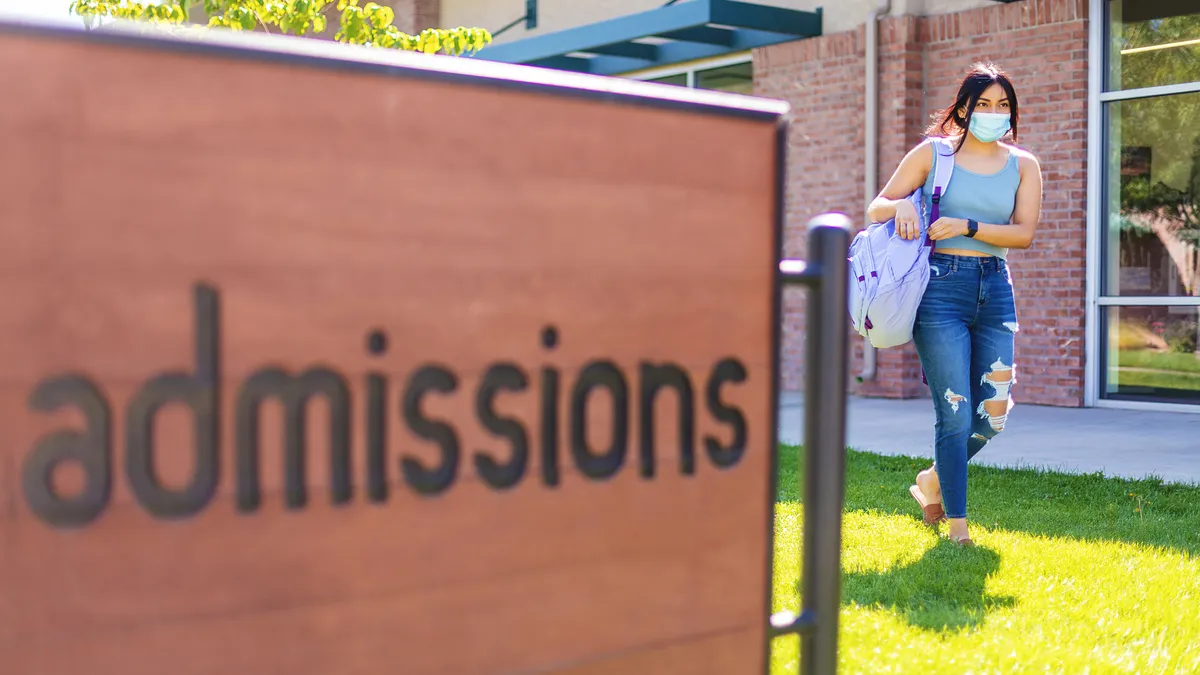A whopping 39 million adults under 65 have left college without completing a credential. But in the 2020-21 academic year, just 2.4% reenrolled in class.
That's according to a recent report from the National Student Clearinghouse Research Center. Released early last month, it showed the number of stopped-out students grew by 1.9 million, or 5.3%, since the last time numbers were calculated in December 2018.
For institutions and states, understanding who, exactly, is reenrolling can help with strategizing about how to attract and graduate other stopped-out students.
As of last year, 46 states had specific goals for their residents' postsecondary attainment, the report said. The 39 million students who were once involved in higher ed could be a place for them to begin.
“Even though the likelihood of re-enrollees returning to the institution they left differs by the institution type of last enrollment, they are likely to persevere at the institution where they re-enroll, and some are able to complete their first credential within a single year,” the report said.
Here's a breakdown of stopped-out students by key characteristics.
Gender
Perhaps unsurprisingly given their higher overall rates of participation in higher ed, women were more likely than men to reenroll and to persevere or earn a credential.
This trend is evident even though there are only slightly more women than men in the stopped-out population, Mikyung Ryu, director of research publications at the research center, said in a webinar on the report.
Of reenrollees, 59% were women, a statistic that mirrors women’s share of the overall student population. The already disparate rates of reenrollment between women and men widened when looking only at Black, Latinx, and Native students who've stopped out, as well as those under 25. Gender gaps narrowed for White students, Asian students and older students.
Age
Generally, students under 25 were the most likely age group to reenroll. More than 10% of women under 25 who had some college but no credential reenrolled in the 2020-21 academic year. That's compared to 6.7% of men that age. However, those under 25 make up only 5.4% of the total stopped-out population, a little over 2 million.
Reenrollment rates generally fell with age. Though people 64 and older comprise nearly 11% of the stopped-out population, only 0.1% reenrolled.
Two-thirds of stopped-out students who reenrolled in the past academic year were adults under 35, Ryu said during the webinar.
Race and ethnicity
Student data showed relatively little variation in reenrollment rates across race and ethnicity. But students of different races did vary in the rates at which they stayed in college after reentering, with White and Asian students being more likely to persevere than their Black, Latinx and Native American peers. Overall, only 55% of students who reenrolled in the 2019-2020 academic year remained enrolled the following year.
Institution type
Perseverance rates also varied by the type of institution in which students reenrolled. Community colleges had the lowest rate of perseverance, at 50%, and private nonprofit four-year colleges had the highest rate, at 65%.
Yet students were much more likely to reenroll at a community college — the sector captured more than 50% of reenrollees. No other type of institution came close.
Those who stop out are more likely to reenroll at another institution than the one they left, typically one in another sector. But those who originally left community colleges were the least likely to attend another institution.
Public institutions as a whole also accounted for 70% of credential earners who returned to college after stopping out.
Credentials sought
The most common credential earned by reenrollees differed along racial lines. Black students were most likely to receive a certificate, while Latinx students were most likely to receive an associate degree. Asian students most commonly received bachelor's degrees.
Stopped-out students most commonly earn associate degrees and nondegree certificates, which account for about 69% of their annual total awards, Ryu said during the webinar.
“This is in notable contrast to the national patterns of first-time college graduates generally, who are more likely to earn bachelor’s degrees," Ryu said.
The fields of study chosen by reenrollees closely mirror the most popular choices for the general undergraduate population. The data showed a notable outlier, though. Among those pursuing a bachelor’s degree, reenrollees were nine percentage points more likely than the general student population to be majoring in business. Overall, 27% of reenrollees at the bachelor’s level were majoring in business.
State
Some states punched above their weight for reenrolling stopped-out students. Among them was Florida, which has only 4.4% of the stopped-out population but produced 7.2% of credential earners. Illinois, by contrast, had a disproportionately low rate of reenrollment.




















